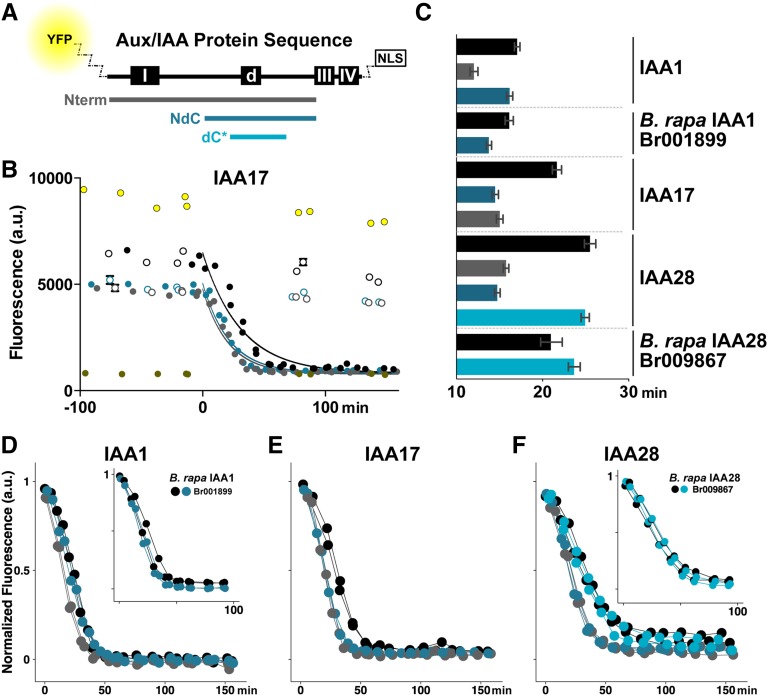Figure 1.
Sequences flanking the degron are required to recapitulate degradation rates of full-length (FL) Aux/IAAs. A, Schematic of the domain structure of a FL Aux/IAA indicating the location of domain I (repression), the conserved degron (d), and domains III/IV (dimerization). Colored bars indicate the size and position of peptide fragments tested for degradation dynamics in relation to FL protein (black). All peptide fragments and FL proteins were expressed as fusions with an N-terminal fluorescent protein (YFP or VENUS) and a C-terminal 2xSV40 nuclear localization sequence (NLS). B, Raw IAA17 degradation as captured by time course fluorescence flow cytometry. Diploid yeast strains coexpressing TIR1 and YFP-IAA17 fragments were treated with 10 μm auxin (filled circles) or mock (white circles) at time = 0 min. Data from two independent replicates are plotted together, and each point represents 1,000 to 3,000 individual events recorded in the cytometer. Error bars representing the sem are shown for each point, but in most cases the marker size is larger than the error. Bright-yellow circles are data from cells expressing YFP with no protein fusion, whereas dark-yellow circles are data from cells expressing an untagged Aux/IAA. Data were fit to a one-phase decay nonlinear regression with a band representing the 95% confidence intervals across the fit. C, Half-lives for all fusion proteins presented in B and D to F. For all data, half-lives with error were calculated from nonlinear regression fits such as those as shown in B. Error bars represent 95% confidence intervals. D to F, Short peptides (either NdC or dC*) of Arabidopsis IAA1 (D), IAA17 (E), and IAA28 (F) are able to degrade at least as rapidly as their respective FL proteins as assessed by time lapse fluorescence flow cytometry. To facilitate comparison of degradation dynamics, mean fluorescence values were normalized to starting fluorescence. All data represent two independent experiments. NdC and dC* fragments of putative B. rapa orthologs of IAA1 and IAA28 (insets) similarly recapitulated FL degradation dynamics.

